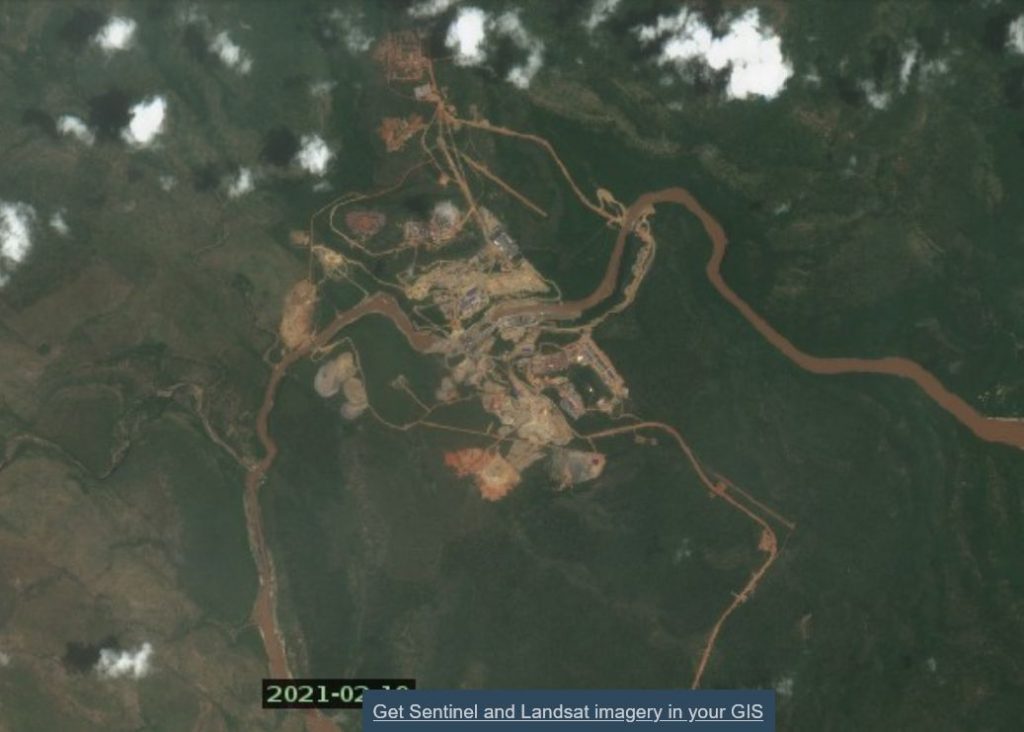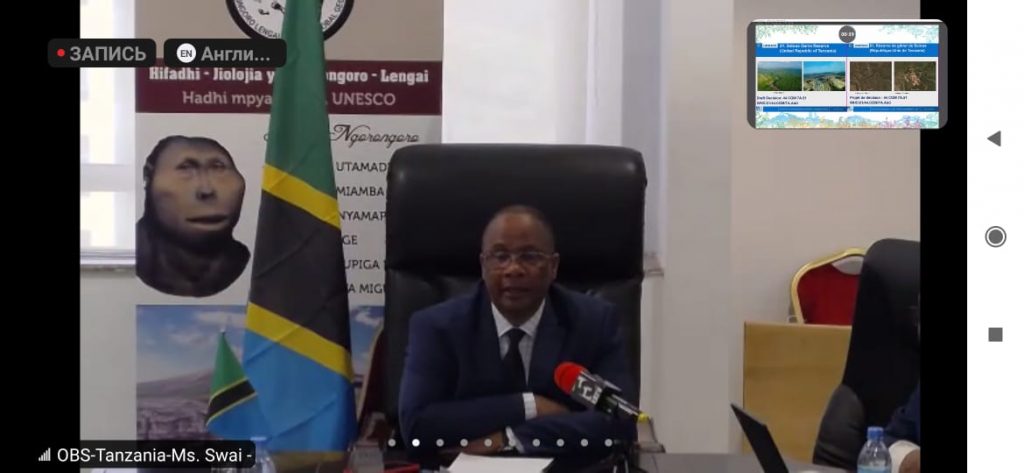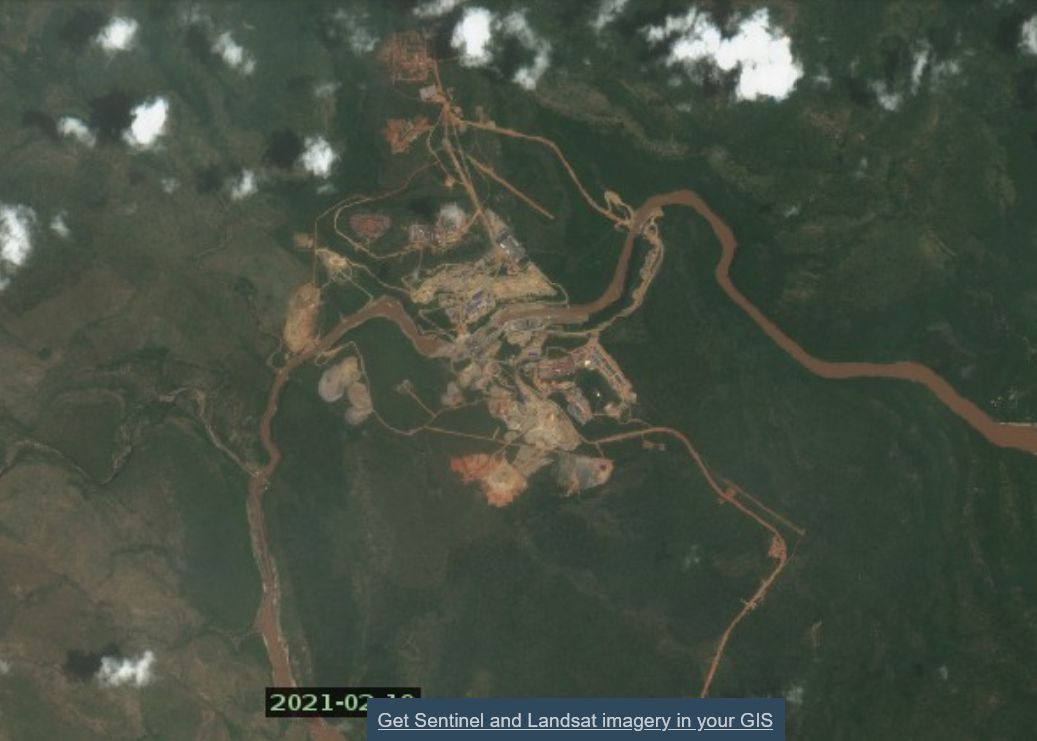
On July 19th, the majority of the World Heritage Committee Members refuted the World Heritage Centre’s recommendation to de-list the property damaged severely and deliberately by construction of a hydropower reservoir on the Rufiji River. Instead many of them congratulated the State Party of Tanzania for its relentless efforts in safeguarding the Selous Game Reserve while pursuing “sustainable development”.
Amendments to the draft decision corrupting the spirit of the Convention were initiated by the Government of Uganda, widely known for its failure to preserve Kalagalla biodiversity offset on the Nile River established by a binding agreement with the World Bank as a part of controversial Bujagali Hydropower Project and instead of that inviting subsidiary of China Three Gorges Corporation to build Isimba Hydro on that river stretch. So, in a sense, this State Party is an expert on circumventing international agreements to allow hydropower development on protected rivers.
The assault on Conventions principles was heavily backed by delegations of the Peoples Republic of China and Egypt, whose firms Arab Contractors, Elsewedy Electrics and Power China are the key builders and beneficiaries of this very Julius Nyerere Hydropower Project on Rufiji River. In recent years civil society voiced a concern that countries- Committee members, whose companies and banks have a direct stake in encroachment on a given World Heritage property should abstain from decision-making process. Alas, here they were leading the assault.
Corrupt amendments to the decision were also actively supported by the Government of Ethiopia notorious for causing transboundary conflicts and socio-ecological crisis by dam-building in the headwaters of African rivers (e.g. dams on the Omo river, which subsequently led to the inscription of the Kenyan “Lake Turkana Parks” as Heritage in Danger).
Norway stood as the only supporter of draft decisions proposed by UNESCO bodies, while Australia, Guatemala, Spain and Russia were maneuvering to arrive at a compromise consensus decision, while retaining at least some legitimate and useful clauses in its text. Alas, they largely failed.
This discussion was somewhat reminiscent of a decision-making process taking place at a committee session almost a decade ago, which allowed Tanzania “for the last time in history” to carve out of the Selous Game Reserve a uranium mine, which was then eyed for investment by a Russian state-owner mining company (and at the time Russia was a member of the WH Committee).
In the course of discussion, various state parties blatantly disregarded and refuted scientific evidence, used aggressive and insulting political rhetoric, and argued that this lawless hydropower project on the Rufiji River is a good example of the “balance between conservation and sustainable development”. A top official from the Host Country was asking IUCN “Do you know any other realistic alternative to develop modern energy system in Africa, other than hydropower?” The point was really self-serving, since most of large hydropower in Africa nowadays is being developed with substantial support by Chinese firms and finance institutions. In response the IUCN noted that a valid assessment of alternatives has never been undertaken by the State Party of Tanzania. We also can point to many third-party studies concluding that the new dam at Stiegler’s Gorge of Rufiji River is among the most risky, expensive and destructive options to develop national energy system.

When the flawed decision was taken Tanzania thanked the Committee members for “retaining us on the Heritage in Danger List” and again blamed the IUCN and WH Centre for presenting “incorrect information” as “no damage was inflicted on the outstanding universal value of the property”. This has fully shown its lack of preparedness to further dialogue with UNESCO based on scientific facts.
NGO observers were allowed to speak only after this tragic comedy was over and we said the following:
ON DECISION MADE TO RETAIN THE SELOUS GAME RESERVE ON THE WORLD HERITAGE IN DANGER LIST
Thank you Chair for giving us the floor. This intervention is made on behalf of the Environmental Investigation Agency and the Rivers without Boundaries Coalition.
We regret this Committee’s decision not to de-list the Selous Game Reserve as per the draft decision. We are disappointed by the move to retain the property on the List of World Heritage in Danger.
The Rufiji hydropower project has been repeatedly flagged by UNESCO and IUCN as flouting Tanzania’s commitments under the UNESCO Convention. This Committee has explicitly requested that the project construction not be carried out. The Tanzanian Government has instead chosen a path of unilateral action that has been detrimental to the Outstanding Universal Value of the Selous; for many years, even prior to the pandemic, the State Party failed to invite a Monitoring Mission to the site. [insert something here about time-bound requirements for Tanzania to invite monitoring mission well before the reservoir is filled in November, or risk automatic de-listing]
The decision to not de-list the Selous absolves the State Party of its responsibilities in instigating an unsustainable project in the middle of our shared heritage. Further, we are concerned that today’s decision waters down the purposes of the UNESCO Convention
The State Party has continued to undertake activities in the Selous Game Reserve that are contrary to this Committee’s own recommendations. Information published by the State Party presents the dam over halfway complete. Significant deforestation in key habitats and the diversion of the Rufiji River- the central artery of the property- have taken place. The State Party has publicly announced its intention to start filling the reservoir in November 2021.
The reasons for the site being designated as World Heritage have been systematically destroyed, exclusively due to the construction instigated by the State Party.
We do not dispute the State Party’s right to develop energy; however, this Committee has unequivocally opposed the development of large dams inside UNESCO sites, and so a natural consequence of the State Party’s action should be de-listing.
Today’s meeting was unfortunately a missed opportunity for the Committee to send a clear and unambiguous message that the wilful destruction of ecologically important UNESCO sites is unacceptable under the UNESCO Convention. We would also draw attention to the involvement of state-owned companies and banks of several States Parties in the Rufiji project and urge the Committee going forward to remind Parties of their commitment to not threaten the World Heritage of other State Parties.
Decisions taken today on the Selous Game Reserve will not only determine the long-term protection of our shared heritage but also the future of the UNESCO Convention. We are deeply disappointed that a more robust outcome was not agreed to promote the protection of our share heritage, our environment and the integrity of the UNESCO Convention. .
Thank you Chair.
(In retrospective I regret, we have not asked for a minute of silence avoiding to hurt the feelings of the audience)
Many observers assume that, despite tremendous damage, the enormous 5.2 million ha territory of the Selous Game Reserve may still possess some wildlife habitat and populations worth listing as the World Heritage. However, given the continuous violent misbehavior of the State Party, its unwillingness to abide to rules and engage in timely dialogue with the UNESCO based on facts and scientific findings tell us that retaining the Selous Game Reserve on the List of Heritage in Danger is unlikely to guarantee protection of its remaining values. Instead, in the original draft decision the World Heritage Centre was proposing to invite Tanzania to assess residual values and, if feasible, apply for a new nomination for remaining intact habitats. Now, after the Committee’s decision, little incentive is left for Tanzania to play by the rules and respect World Heritage Convention, especially when such behavior is aggressively backed by influential and self-interested delegations of some of the most influential countries of the region and the world.
Belatedly we still have to call for a minute of silence for all World Heritage sites that are willfully degraded due to the Convention’s parties putting their political and economic gains above the key principles of the World Heritage Convention.
Eugene Simonov. The RwB Coalition Coordinator
Also see in-depth analysis:
How the World Heritage Convention Can Protect Rivers from Destruction by Dams: THE FINAL REPORT


